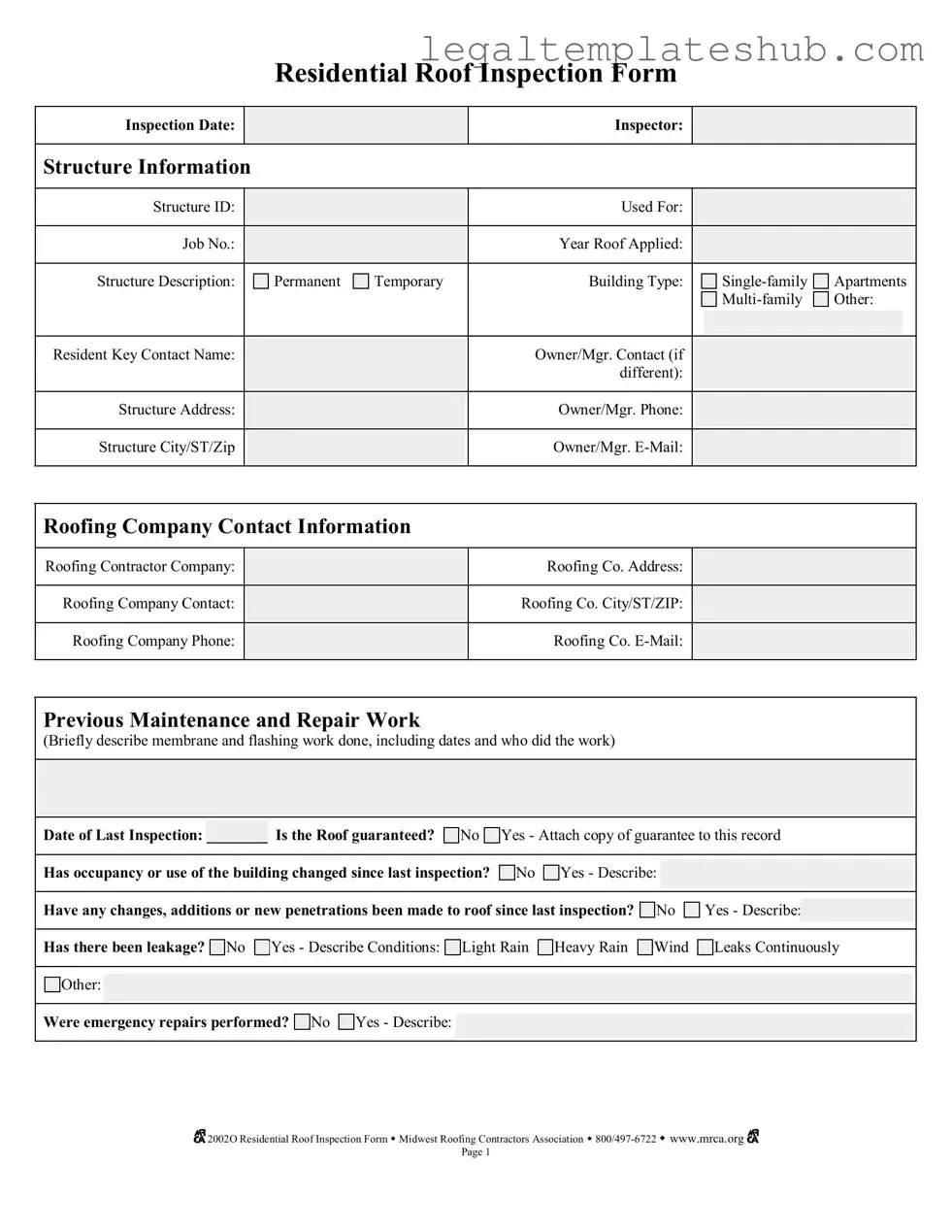Blank Roof Inspection PDF Form
The Residential Roof Inspection Form is a vital tool used to assess the condition of a roof. This form captures essential information about the structure, previous maintenance, and current roof conditions. Completing this form accurately ensures that any necessary actions are taken to maintain the integrity of the roof.
To get started, please fill out the form by clicking the button below.
Access Editor
